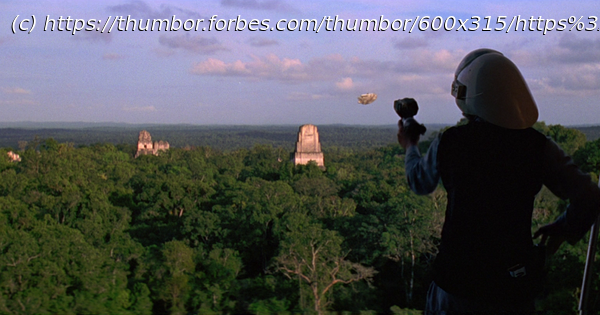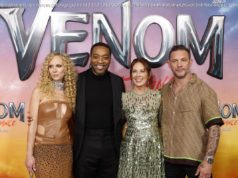Director George Lucas went to great lengths to include images of ancient pyramids in his science fiction film, why? The past holds more power then we know!
One of my first memories is of going to see the movie Return of the Jedi when it was first released to theaters. My brother and I were more than a bit obsessed with Star Wars and our grandparents thought that taking us to see the new movie would be a good way to bond. From the opening scroll to the Pit of Sarlacc, to the Rebel raid on Endor, to Luke saving Darth Vader from the Emperor, I was captivated from beginning to end. I walked out of theater swinging my pretend lightsaber dreaming of one day becoming a Jedi Master. My grandparents, having never seen the first two movies, were slightly more confused.
Many years later, I have not yet mastered the ways of the Force, but I did find my way to the Rebel Base on Yavin 4. In the original Star Wars movie, the Rebellion had built a base to hide away from the Empire on a jungle-covered moon orbiting a gas giant named Yavin. While most of the scenes from the base were filmed on soundstages in London, the backdrop was made up by the ruins of the ancient Maya city of Tikal in modern day Guatemala.
When I went off to college, I still had a slight obsession with Star Wars, but I had decided that my future lay in dirt not the stars. As I began to study archaeology, I gradually felt the pull of Yavin 4 and soon found myself neck deep in books about the ancient Maya. It took several years before I made it to Tikal, but at long last I found myself standing atop Temple 4 looking out over the Peten jungle, taking in the same vista that a lookout for the Rebellion against the Empire had once observed while X-wings sped off to the horizon.
This connection between a futuristic science fiction movie and an ancient archaeological landscape is not simple happenstance. An early episode of the original Star Trek television series found the crew of the starship Enterprise checking in on an archaeologist studying ruins on a remote planet, not to mention the numerous ancient Greece references throughout the series. When Star Trek was rebooted with The Next Generation, writers decided Captain Picard should actually be an amateur archaeologist.
The list goes on! The “discovery” of an ancient circular structure in ancient Egypt launched the Stargate franchise, which includes a movie, three separate television series, and a plethora of other content. Both the original and rebooted Battle Star Galactica televisions shows were steeped in allusions to the Classical world. On top of it all, the time traveling Dr. Who has had more than a few interactions with archaeologists, the ancient world, and, well… “Spoilers Sweetie!”
The number of examples only grows if we move to novels, pulp fiction, and comic books. The human past is a veritable playground for our futuristic imaginations.
In his book, Spooky Archaeology, archaeologist Jeb Card notes that this is no mere coincidence. The distant past is a strange and little-known place for most people. Written histories give us the comfort of names and dates, but when we look at societies without such records (or with records that we struggle to read), the observer enters a mythic space where imaginations can wander. Card writes “The naming of mythic time, and the retrieval of material objects from that time, has powered the popularity of archaeology,” adding that studying the “origins of humanity and civilization has made [archaeology] powerful and transgressive.






